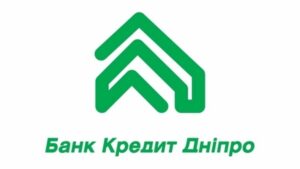
Ukraine’s proposal to the European Union on additional transit in the amount of 55 billion cubic meters of gas under special conditions is good, and can be implemented if Russia can extract more gas and wants to supply more, since Nord Stream 2 will not work for six months for sure, German Ambassador to Ukraine Anka Feldhusen has said. “It was a good offer from Ukraine. If you look closely, it is only about additional gas volumes. It is not as easy as we think, because gas is located in Russia, not in Ukraine, the gas transmission point is on your eastern border. The proposal is interesting, because Nord Stream 2 will not work for six months for sure. If Russia can produce more gas and wants to supply more, if they have a commercial interest and they can physically do it, this is a good proposal, and I can imagine that it will be implemented,” Feldhusen said in an exclusive interview with Interfax-Ukraine.At the same time, the ambassador said that the German federal regulator postponed the certification of Nord Stream 2 as an independent gas transmission operator, as it realized that first it needed to do unbundling, and without it the operator should not work further.“This institution – Bundesnetzagentur – operates exclusively according to German and European laws. They saw that they needed to do unbundling first. I think they realized that without this they should not work further,” she said.Feldhusen said that this was not a step on the part of Germany in response to Russia’s blackmail.“No, not at all. We all think that Russia has an interest in getting certification faster, not later. However, now it will definitely not be faster. If there are no conditions for certification, then it will not be. Russia knows about this. The fact that we have a problem with the supply of energy now is another challenge, we are all working on this, not only Germany, but other countries as well. But I think that the fact that Bundesnetzagentur stopped certification has nothing to do with this crisis,” she said.According to her, the first reason for high gas prices is the fact that there is little gas on the European market.“The Netherlands, Norway are supplying less gas. We knew about this. The bad surprise was that liquefied gas goes entirely to Asia, because there are higher prices. That is, this is a commercial decision. Russia supplies gas so far under contracts. If we look at the annual or monthly volumes, they supplied even more in November than before. We are watching this very closely, but so far these natural reasons are more influencing the price of gas,” the diplomat added.Feldhusen assured that if Russia uses gas as a weapon, Germany will take appropriate measures.“We are closely monitoring the situation, and if Russia uses gas as a weapon, we will take appropriate measures,” the ambassador said.
https://interfax.com.ua/

The new Omicron coronavirus disease strain has not yet been detected in Ukraine, but all non-Delta samples will be subject to mandatory genome-wide sequencing, Health Minister Viktor Liashko has said.“Now in Ukraine there is a system for monitoring the spread of COVID-19 strains. At the regional level, there is a certain reserve of PCR test systems for determining the Delta strain. All non-Delta samples will be subject to mandatory genome-wide sequencing. To date, the Omicron strain has not been found on the territory of Ukraine,” he said at a briefing on Monday.The minister said that the government had already decided to allocate an additional UAH 67.5 million for the purchase of additional test systems for the determination of the Delta strain.

Bank Credit Dnipro intends to acquire the First Investment Bank (PINbank, Kyiv), owned by Russian citizen Yevgeny Giner (88.89% of shares), the press service of the Antimonopoly Committee of Ukraine said on Monday. “By order of the state commissioner No. 09/334-r dated November 23, 2021, case No. 130-25 / 3-20-EK was initiated on concentration in the form of acquisition of the First Investment Bank by Bank Credit Dnipro, which grants that 50% of the votes in the supreme management body of the bank are exceeded,” the committee said.According to the National Bank of Ukraine (NBU), as of June 25, 2021, the shareholders of PINbank were also Oleksandr Shandruk with a 9.51% stake.Bank Credit Dnipro was founded in 1993. As of January 1, 2021, according to the National Bank of Ukraine, the only shareholder of the bank was Oleksandr Yaroslavsky.According to the NBU, as of October 1, 2021, Bank Credit Dnipro was ranked 19th in terms of total assets (UAH 19.781 billion) and PINbank 44th (UAH 3.698 billion) among 71 operating banks.

Ukrainian transport companies carried almost 2.215 billion passengers in January-October 2021, which is 4% more than in the same period in 2020, the State Statistics Service has reported.The passenger turnover of transport companies in January-October 2021 amounted to 53 billion passenger-kilometers, which is 28.4% more than last year.According to the State Statistics Service, 69.4 million passengers used rail transport in January-October (including city commuter train services), which is 20.8% more than in January-October 2020, and 911.6 million passengers were carried by road (1.1% more).Air transport increased passenger traffic by 91.8%, to 8.2 million people.In addition, according to the State Statistics Service, in January-October 2021, some 331.1 million passengers used trams (5.8% less compared to January-October 2020), 399.3 million used subway (18.9% more), and 495.3 million used trolleybuses (3.4% more).During the specified period, water transport carried 500,000 passengers (72.5% more).

Ukraine since the beginning of this season and as of November 25, 2021 has threshed 79.73 million tonnes (3.06 million tonnes more per week, November 18 through November 25) of the main grain and leguminous crops from an area of 15.19 million hectares, according to a report on the website of the Ministry of Agrarian Policy and Food on Friday.According to the ministry, the harvesting of grains and legumes has been completed in five regions: Dnipropetrovsk (4.81 million tonnes in total), Mykolaiv (3.79 million tonnes), Kherson (3.51 million tonnes), Donetsk (2.27 million tonnes) and Ivano-Frankivsk (0.93 million tonnes) region.At the same time, the leaders in harvesting were Vinnytsia with an indicator of 6.21 million tonnes, Poltava (5.57 million tonnes), Chernihiv (5.43 million tonnes), Odesa (5.13 million tonnes), Kharkiv (4.87 million tonnes), Dnipropetrovsk (4.81 million tonnes) and Cherkasy (4.31 million) regions.In total, 102.23 million tonnes (3.48 million tonnes more per week) of major cereals, legumes, oilseeds (as well as sugar beets dug out) have been harvested this season from a total area of 23.97 million hectares.As the ministry said, 35.07 million tonnes of corn from 4.78 million hectares (87% of the forecast) were harvested as of the indicated date.In addition, 16.17 million tonnes of sunflower (0.38 million tonnes more) were harvested from 6.47 million hectares (99% of the forecast).Farmers of Ukraine also dug up 10.53 million tonnes (0.28 million tonnes more) of sugar beet from 222,700 hectares (98% of the forecast).The ministry marked the end of the harvesting of buckwheat – 110,000 tonnes from 84,200 hectares.The Ministry of Agrarian Policy also reminded of the end of the harvesting of rapeseed, of which 2.91 million tonnes were harvested from an area of 1.01 million hectares, 182,800 tonnes millet were harvested from 77,600 hectares. In addition, the soybean harvest amounted to 3.42 million tonnes on 1.28 million hectares.The average yield of wheat as of November 25 was 4.62 tonnes per ha, barley – 3.91 tonnes per ha, corn – 7.325 tonnes per ha, sunflower – 2.497 tonnes per ha, soybeans – 2.673 tonnes per ha, rapeseed – 2.86 tonnes per ha, sugar beet – 47.29 tonnes per ha, peas – 2.419 tonnes per ha, buckwheat – 1.301 tonnes per ha, millet – 2.45 tonnes per ha.

Ukraine has registered 5,804 new cases of COVID-19, 10,477 recoveries, and 297 deaths in the past 24 hours, the Ukrainian Health Ministry said on Monday.“Over the past day, November 28, Ukraine has recorded 5,804 new cases of COVID-19, including 530 children and 72 medical workers, while 93,970 people have been vaccinated for COVID-19, among them 31,069 persons who received their first shot and 62,901 who have completed vaccination. In the past 24 hours, 2,082 people have been hospitalized, 297 have died, and 10,477 have recovered,” the Health Ministry said on Telegram.Since the beginning of the pandemic, Ukraine has seen a total of 3,427,827 coronavirus infections, including 2,920,714 recoveries and 85,414 deaths.As of this date, 13,320,532 people have been vaccinated for COVID-19, including 13,320,530 who have received their first shot and 10,967,700 who have completed vaccination.